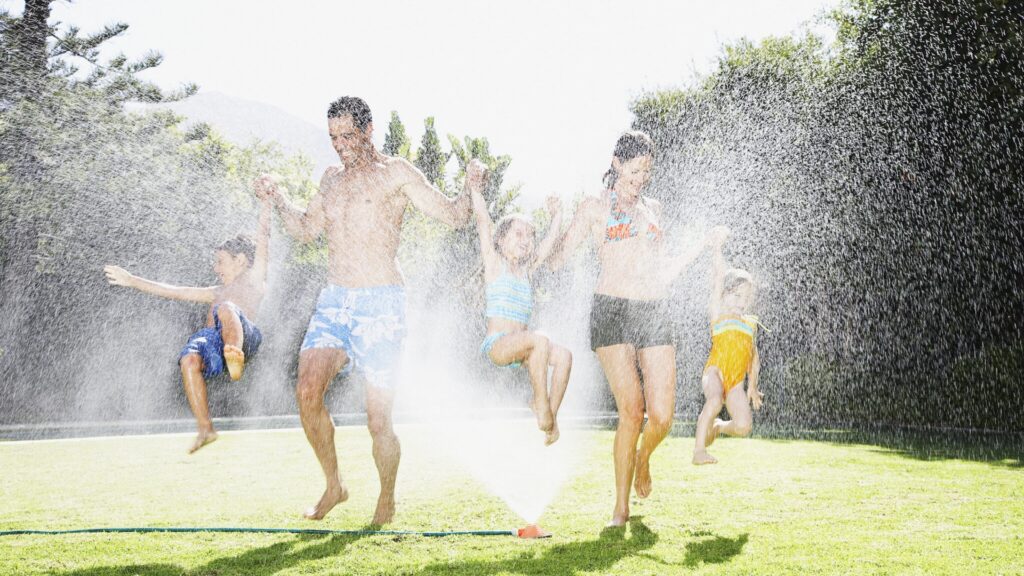
Best Time To Water Lawn In Hot Weather
Everyone knows that lawns need water to grow and remain healthy. But not everyone knows the best time to water lawn in hot weather conditions.
Will watering your lawn in hottest summer burn your grass? In fact, many people assume that watering their lawns in the dog days of summer will likely burn the grass. This simply isn’t true. However, there is an ideal watering schedule for your lawn during the hotter days. Leaving your grass to go without water for too long during a dry spell can bake your lawn!
Still, you don’t want to overwater your grass.
Read on to learn the optimal lawn watering schedule.
Why You Should Never Water Your Lawn at Peak Heat
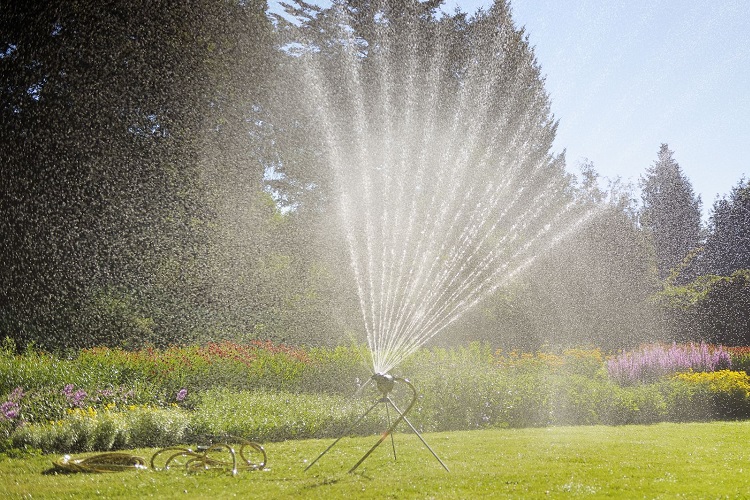
The best time to water lawn in hot weather is the break of dawn.
Watering your lawn at the wrong time or during peak heat may not burn your grass. But it certainly can dehydrate your lawn!
Here’s why.
Evaporation is high during peak heat – typically, midday. Combine that with the warmer months and it’s not too difficult to see why the water can’t get to the roots of the grasses before it evaporates.
This means you will be wasting water, countering your watering efforts, and also depriving your grass of the required amounts of water to stay healthy and vibrant.
Also, there is a high chance of uneven water dispersal if you water your lawn when the sun is shining brightest.
The winds are usually stronger at this time of the day, so the water can spread onto other parts instead of reaching the soil and grasses on your lawn.
Factors to Consider When Watering Your Lawn in Hot Weather
What Type of Lawn Do You Have?
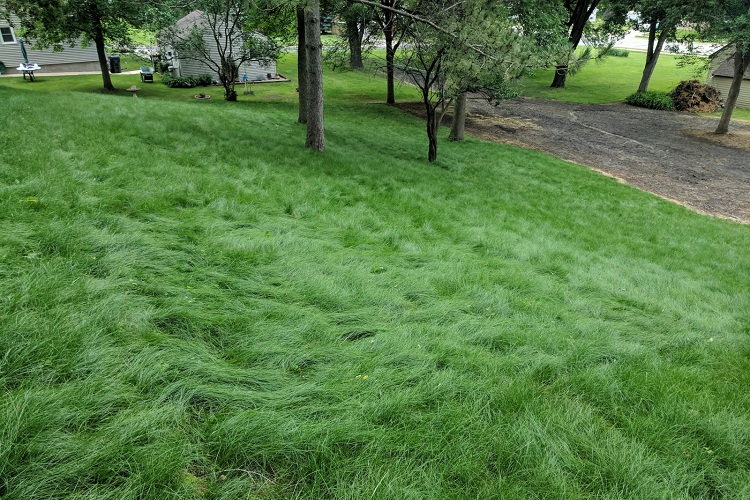
First off, what type of grass do you have on your lawn?
Cool-season grass such as fine fescue, Kentucky bluegrass, and perennial ryegrass do best in spring and fall.
Their root systems are shallow and can only access water that’s near the soil’s surface. For this reason, it is best to water cool-season grass three times weekly, especially when the temperatures start to go beyond 80oF.
On the flip side, warm-season grass, including St. Augustine grass, Bermuda grass, zoysia grass, and carpet grass have deeper root systems.
This means they perform better when they are watered less frequently.
To get optimum results, consider watering warm-season grass once or twice a week at most.
What is the Best Time of the Day to Water Your Lawn?
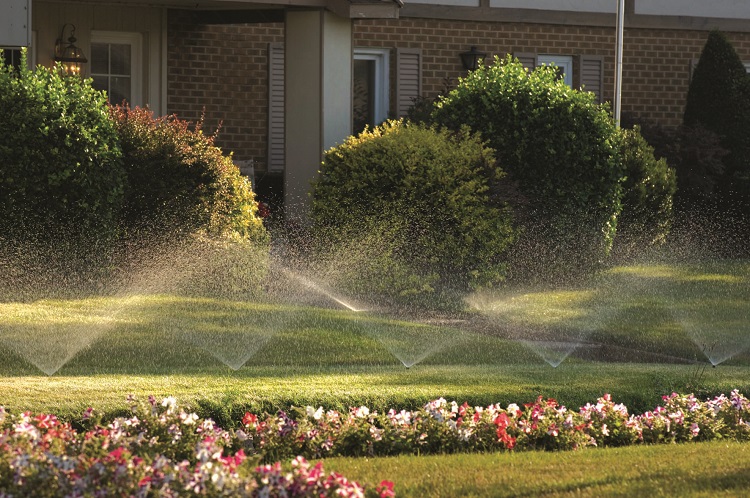
The coolest periods of the day are the best times to water your lawn. During these times of the day, the winds are light, the temperatures are lower, and the ground is covered in dew.
In other words, you want to schedule lawn watering during the morning hours in the hot summer seasons.
Usually, the hours between 6am and 10am are ideal for watering your lawn. However, it is great if you can schedule watering before 8am.
There is less evaporation during these hours. That means the water can reach the roots better if you water the grass in the morning.
Also, the grass will stay cooler for longer and dries out slowly throughout the day as the sun begins to shine and the air starts to get hotter.
While the temperature can also drop during the evenings, there is a high chance of exposing your grass to plant-borne diseases and fungal infections.
The grass will likely remain wet throughout the night since there is no sunlight to dry it during the night.
Also, the soil underneath will remain wet and even waterlogged in some cases throughout the night.
These conditions support the development of pathogens that can negatively impact your lawn.
To significantly minimize the risk of grass diseases and infections, it is best to avoid watering your lawn late in the evening.
How Often Should You Water Your Lawn?
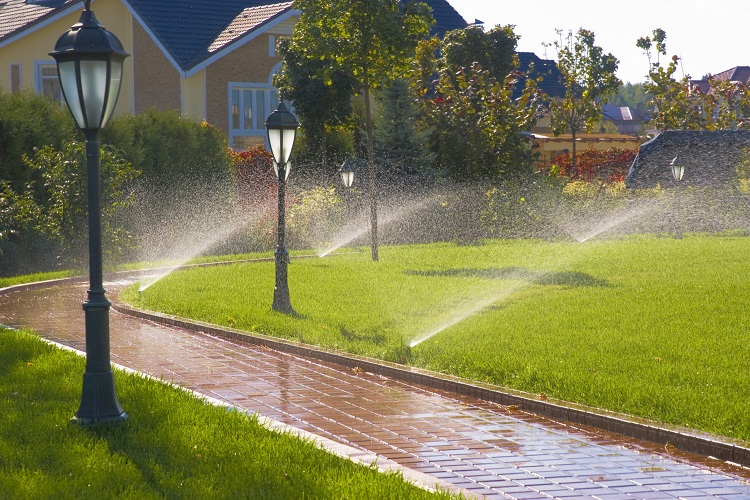
You don’t have to water your lawn every day, even in summer. Most lawns will need about 1.5 to 2 inches of water every week to thrive in the summer.
How often your watering should be will depend a lot on the type of soil on your lawn as well as how far the roots of your grass can reach.
Usually, clay soil absorbs water slower and also dries out slowly. On the flip side, sandy soil drains rather quickly and will likely require watering more often compared to clay soil.
When it comes to the soil depth where the root system of your grass can reach, you want to make sure the water gets to at least six inches into the soil.
Most healthy grasses can reach that far into the grow to draw water.
The exact number of minutes required for each watering session will depend on the type of sprinkler you use, the sprinkler setting, and the size of your lawn.
However, you want to avoid puddles on your lawn, as that would mean you are providing water at a faster rate than your soil can absorb.
Should You Still Water Your Lawn if it Rains?
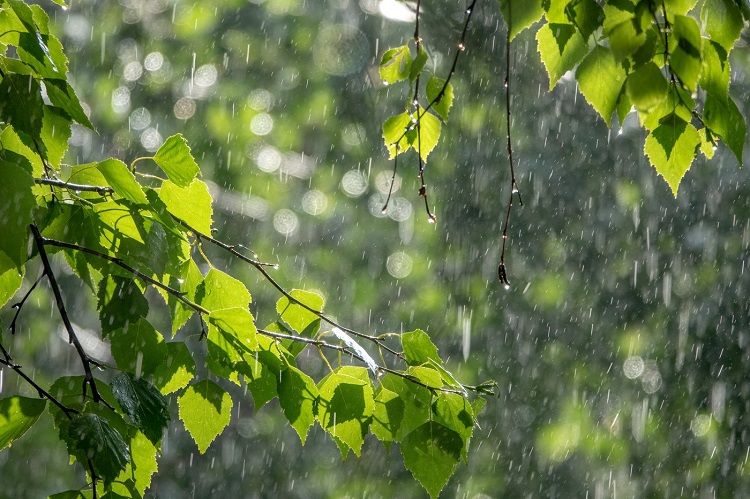
Maintaining a consistent watering schedule with your sprinkler at full blast isn’t the most effective use of your irrigation system during heavy rains.
You probably already know this. However, what if there is light rain? Should you still stick to your watering schedule? Here’s the thing.
You simply can’t get accurate soil moisture measurement by merely looking at your lawn. To help you figure out the water needs of your soil, especially when there is light rain, consider using a few different tools.
First, you can use a rain gauge to determine whether or not your lawn needs more water after a light rain.
You might even go ahead and invest in a soil moisture meter for a more accurate reading.
A smart sprinkler controller is another excellent but expensive option.
You can install the device with your irrigation system to automatically adjust the amount of water delivered to your lawn based on weather forecasts.
Don’t have any of these tools readily available? No worries. A tuna can is another good tool to use.
Simply put one securely into the ground on your lawn to collect rainwater.
Typically, these cans are 1.5 inches tall, so if your tuna can is full after a rainfall, there probably isn’t any need to water your lawn for that week.
How Do You Know if Your Lawn Has Too Little or Too Much Water?

Many homeowners worry about underwatering or overwatering their lawns, especially during the summer, and understandably so.
You don’t want your grasses to suffer in the heat by giving them little water, yet you’re concerned about harming them with excess water.
Note that watering your lawn too much might even be worse than watering it too little. That’s because excess water can prevent essential nutrients from reaching the root system of your grass.
To help you get a clear picture, here’s what underwatering and overwatering look like.
- Underwatering or not enough water will show up on your lawn as patches of dry, mostly yellow grass.
- Another indication of not enough water is a fungal infection that makes the grass yellow, long, and brittle.
- Also, if you see lots of dry and gravelly soil on your lawn, you are not providing enough water or the soil is not retaining the right amount of water.
To remedy the situation, it is best to increase your watering frequency.
On the other hand, here are some common signs that you are overwatering your lawn.
- Run-offs and puddles are a clear indication that you might be overwatering your lawn. It means that the soil is having a tough time keeping up with the job of absorbing the amount of water you are providing.
- If you see roots on the soil surface, it is usually a sign that you are overwatering your grass. This can kill the lawn since the roots will eventually die off.
- The sudden appearance of insects can be a sign of overwatering. That’s because puddles are good breeding grounds for fungi and weeds. These, in turn, can attract more insects than usual on your lawn.
The first thing you should do if you notice any of these signs is to reduce the frequency of watering.
Next, it is important to use weed killers before they take over your lawn.
Check out our guide on the Top 9 Homemade Organic Weed Killers if you want to control weeds safely.
Conclusion
The best time to water lawn in hot weather is during the early morning. Ideally, anytime between 6am and 8am is the most suitable time.
However, if that period doesn’t work for you, anytime before 10am is still fine.
Whatever you do, avoid watering your lawn at midday, especially in hot weather. It is counter-productive at best.
Also, avoid watering in the late evening. It can promote fungal growth that will eventually weaken your grass.
Resources: